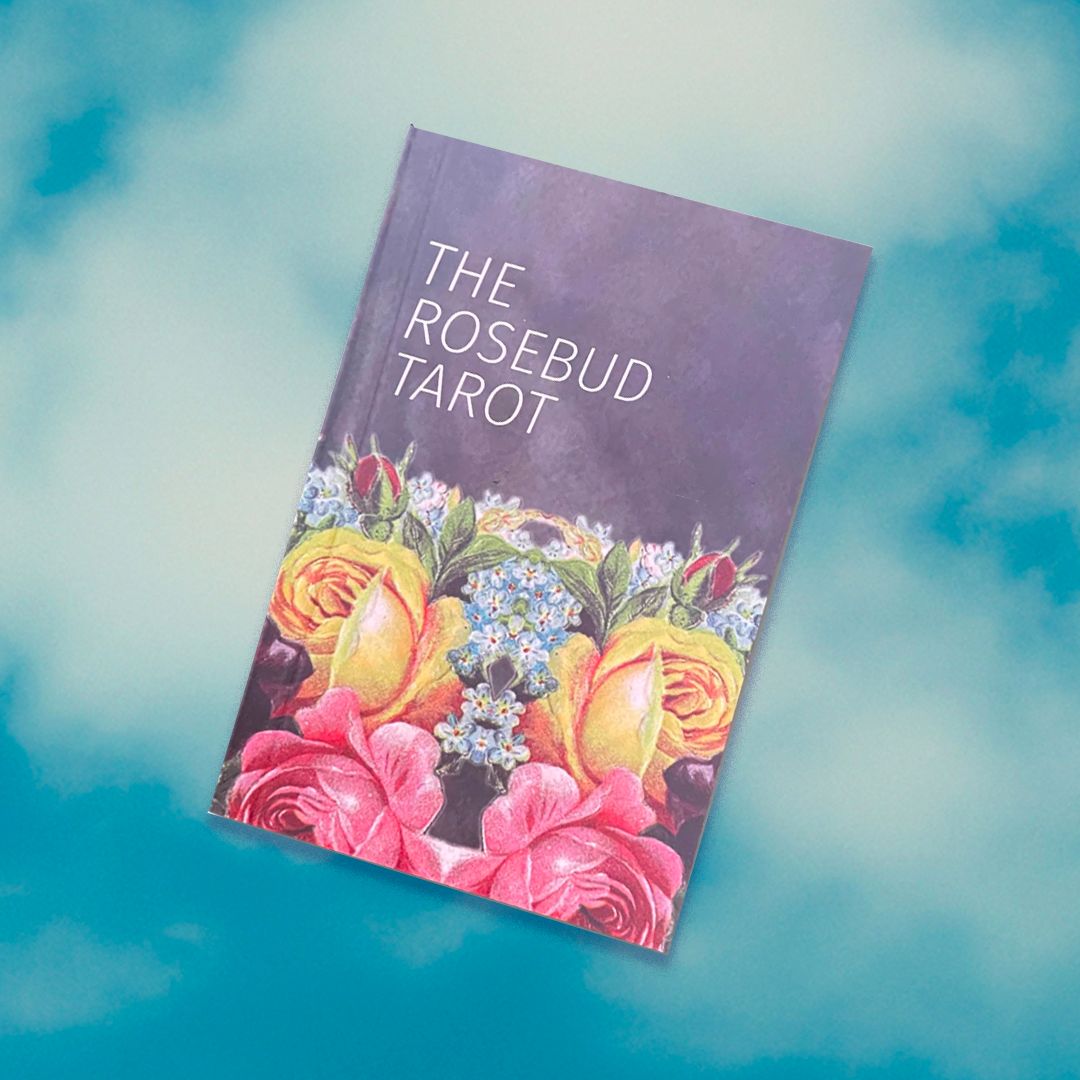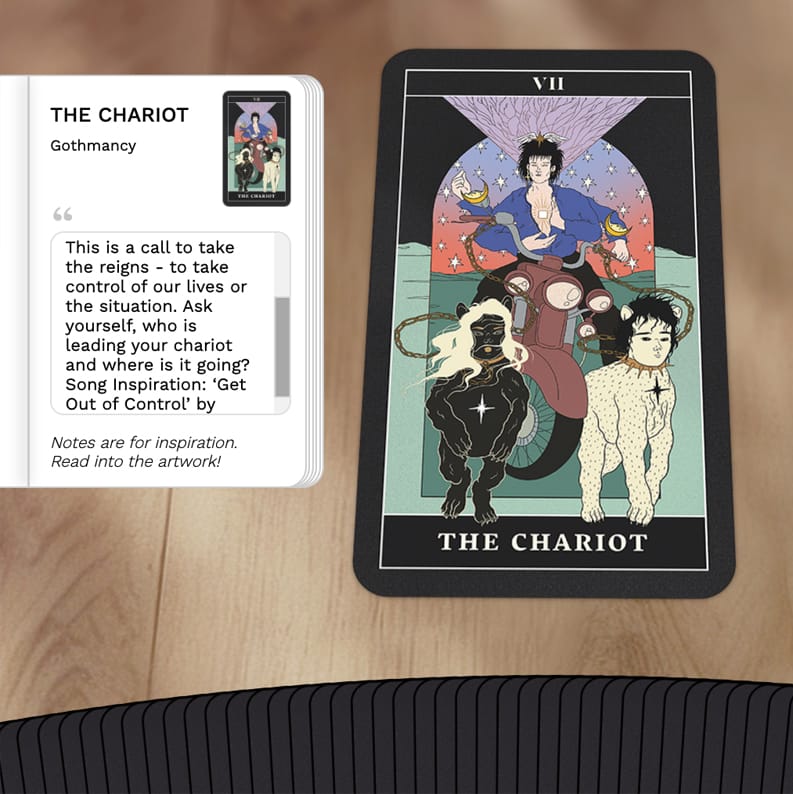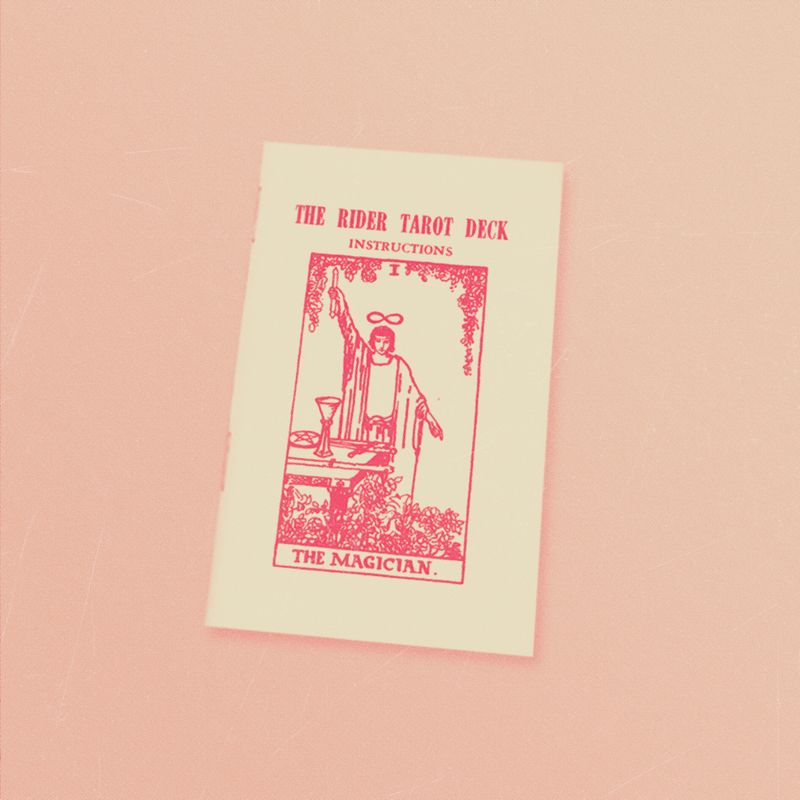Whether they’re a physical guidebook or a digital PDF file, most tarot decks these days come with a set of keywords and ideas generated by the deck’s creator that offer insights, meanings, and interpretations of the cards. Some of these “little white books” are short and sweet, while others are lengthy and robust. But regardless of size or style, tarot guidebooks offer an initial introduction to a deck, and can help new readers understand the vibe, energy, and strengths of a particular set of cards. They provide an opportunity for the deck’s creator or artists to share their vision and inspiration for the deck. But do you really have to use the guidebook if you don’t want to?
The short answer is: no, of course not! If you prefer to use your own meanings and keywords, if you find yourself distracted by a deck’s guidebook, or if you don’t like the style of the book itself, you may choose to discard the book and never look back. But if you’re a newer reader, or if you are someone that wants to expand your own perspective on tarot through using different tarot decks, guidebooks can be an incredibly useful way to let your interpretations of individual cards grow.
Most tarot guidebooks are structured in the same way: they include a blurb about the creator and their intentions for the deck, may share a brief history of tarot itself, and then explain the deck’s structure. If the tarot deck includes bonus cards, or if they change the traditional names of specific archetypes or minor arcana suits, this is often where that information will live. Then, you’ll usually find a page or two for every card in the deck, including keywords, meanings, tips on reading reversals, or methods of interpretation when these cards come up in your readings. Some guidebooks go very in-depth on individual cards, while others may only offer a few words or poetic ideas in order to encourage you to build your own relationship with the deck. Lastly, a lot of modern tarot guidebooks include spreads for readings, and may have a list of resources that readers can use for further study.
They're simply a starting point, rather than a final destination.
In general, guidebooks are not meant to give a be-all-end-all list of meanings for their respective tarot cards — they’re simply a starting point, rather than a final destination. Every reader brings their own life experience, interpretations, and emotions to the cards, so it’s important to allow space for personal definitions when getting to know a new deck, regardless of what the guidebook may include.
But if you do a reading and find yourself struggling to understand what the cards might be offering, or if you look at a card and draw a complete blank, the deck’s guidebook may be able to offer some tips or insights that get those intuitive juices flowing. And sometimes, the deck’s creator may have a completely different interpretation or reimagining for a card or suit, which is detailed in the guidebook.
If you struggle with a particular card, guidebooks can be a fantastic way to collect different meanings for that card, and find a definition that makes more sense to you. And since many of us end up choosing a deck based on the artwork, guidebooks often offer more detailed insights into how individual card images came to be, anchoring us in these images and helping us see aspects and meanings that we might’ve missed on our own.

I regularly refer back to a deck’s guidebook if it’s written by someone whose work I enjoy, or if I find the deck is particularly unique. The Rosebud Tarot’s guidebook includes beautiful poetry written by deck creator Diana Rose Harper, and is one that I refer to every time I use these cards simply because I love the writing so much. Other decks, like the Tarot of the Divine by Yoshi Yoshitani, associates a myth, fairy tale, or story from folklore with every card, so I love to read about these tales and characters when using this deck. These guidebooks offer something distinctive to readings, and can help me to understand more about what the creator was trying to say about a specific card.
If you’re trying to read for yourself around a particularly sensitive or emotional topic, the deck’s guidebook can be a useful way to stay more objective in your interpretations. Even the most experienced cardslingers can sometimes fall into the trap of reading what we want to see into the cards, and by referring to the guidebook, it can help recenter the truth of what the cards are truly offering.
Using the guidebook is like inviting another person into the reading.
Guidebooks are also wonderful to refer to when reading or discussing tarot with friends. One of the best parts of group or collaborative readings are the different insights that individuals bring to the tarot — no matter how long we’ve been reading or how similar our reading styles may be, we each see something distinctive in the cards, and bring our own unique experience to our interpretations. Using the guidebook is like inviting another person into the reading, as the creator’s words can bring yet another perspective, and offer something else for the group to discuss. How does the creator’s vision manifest in the cards? How much does that vision impact the way that each person relates to or understands the reading?
Using a deck’s guidebook is absolutely not mandatory for deep, insightful tarot readings — but if you love a set of cards, you may find that the guidebook offers even more powerful interpretations for you to integrate into your own definitions, and can serve as a cherished companion during your readings.

If you'd like to explore more guidebooks, we recommend trying out Moonlight's digital deck collection, like the Gothmancy Tarot, a punk-inspired deck, with a recommended song for each card.


